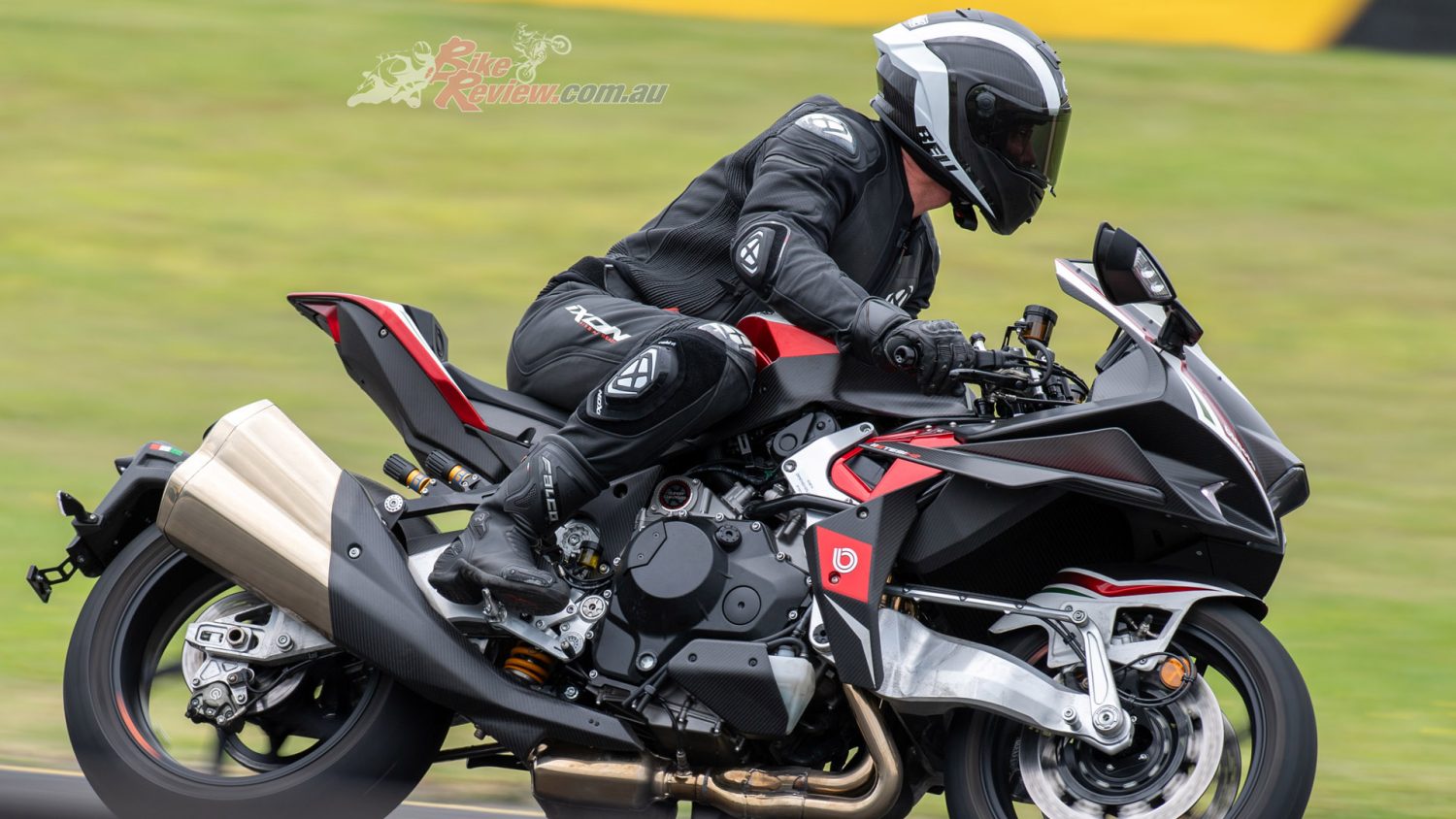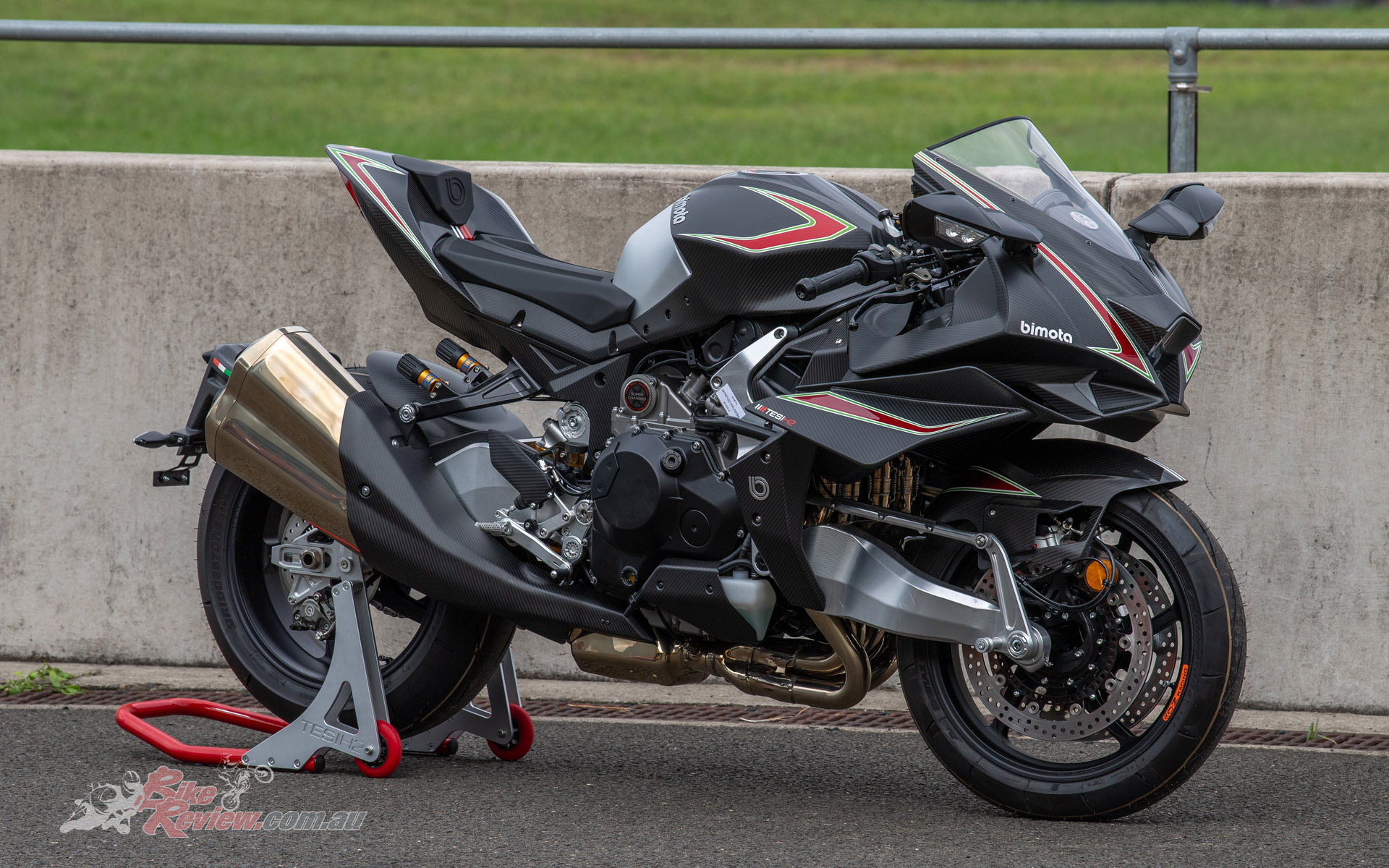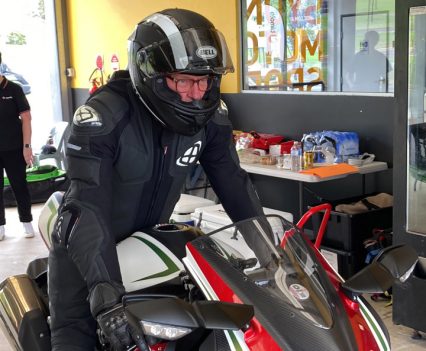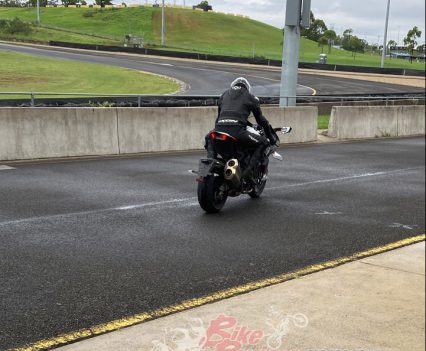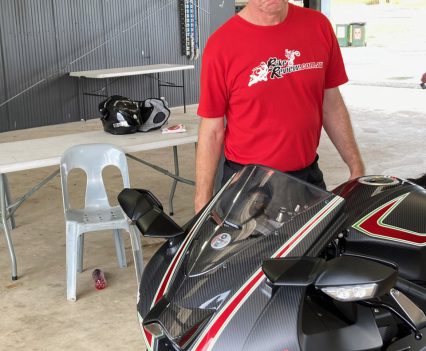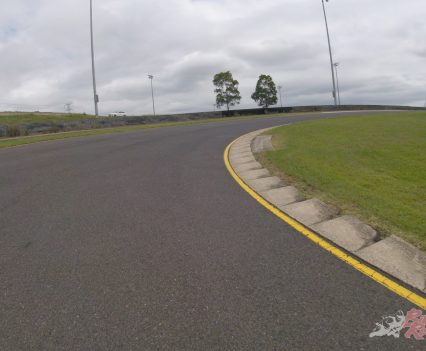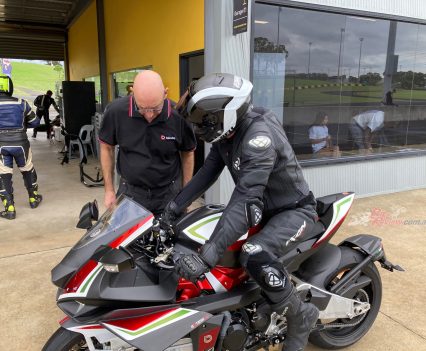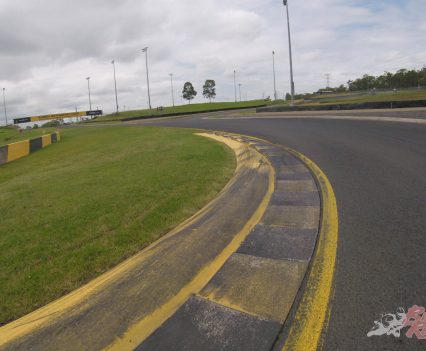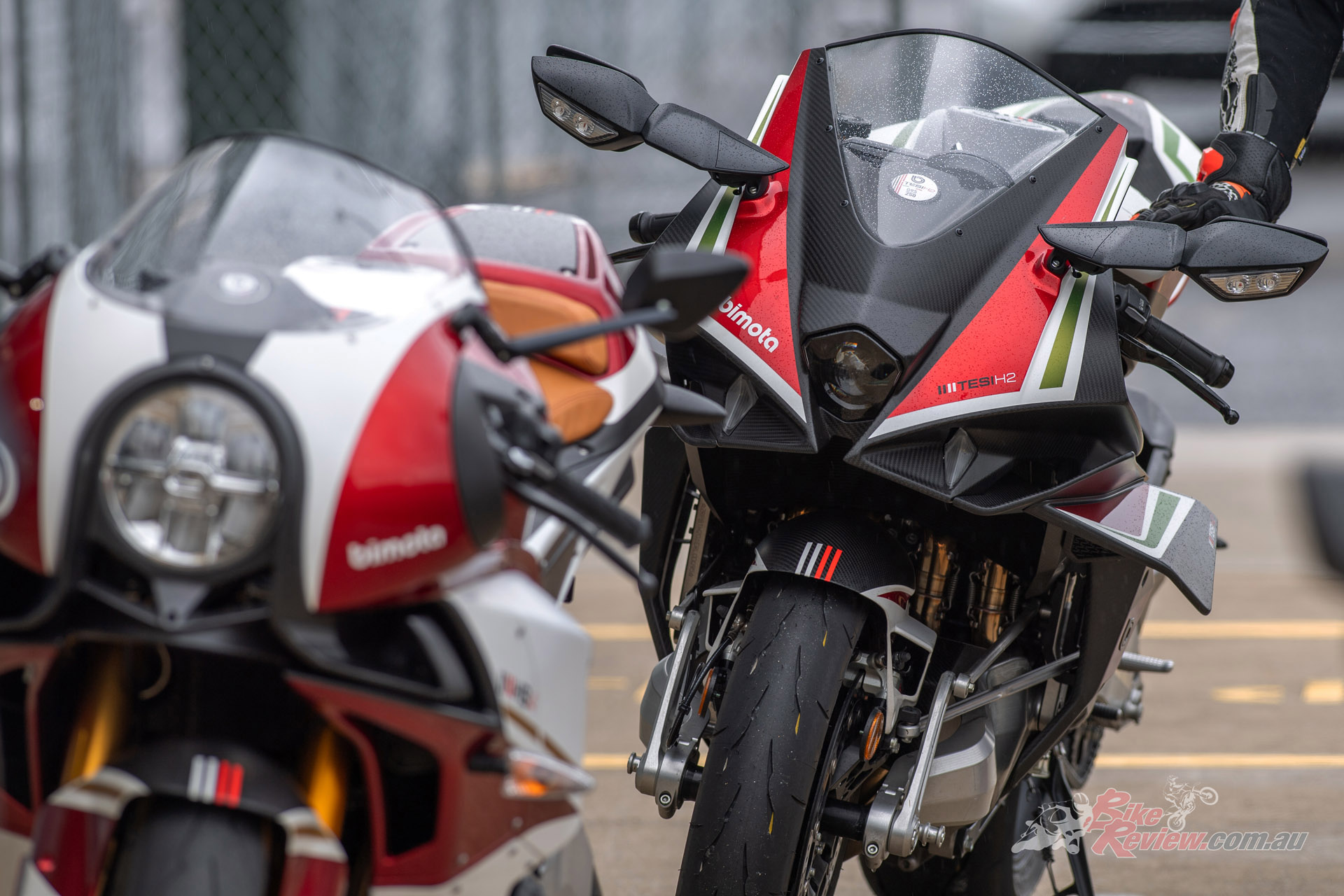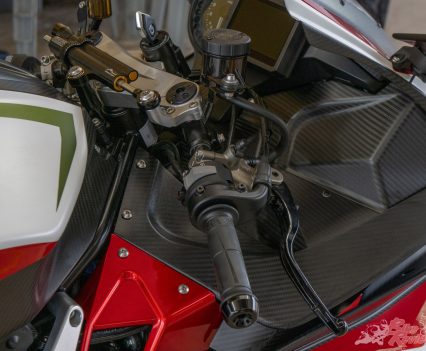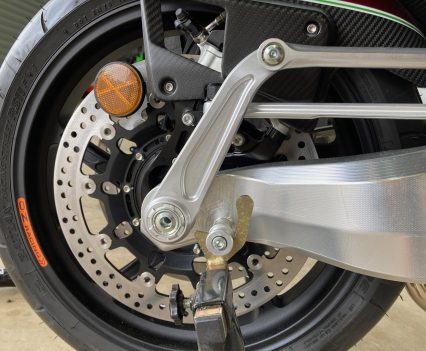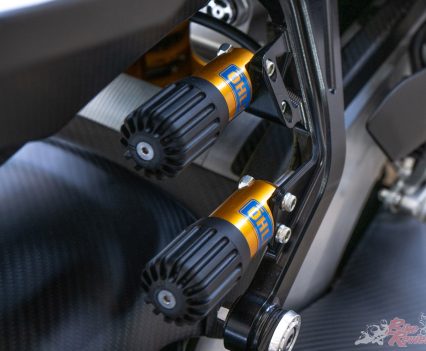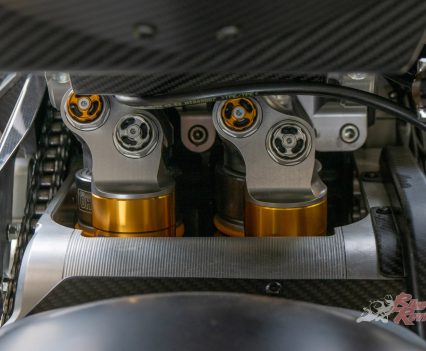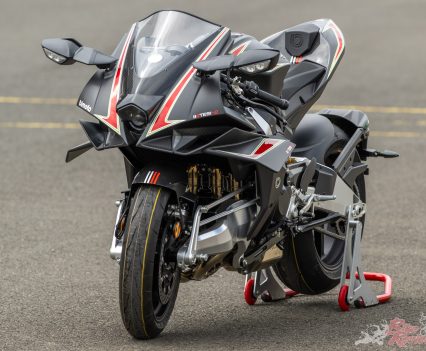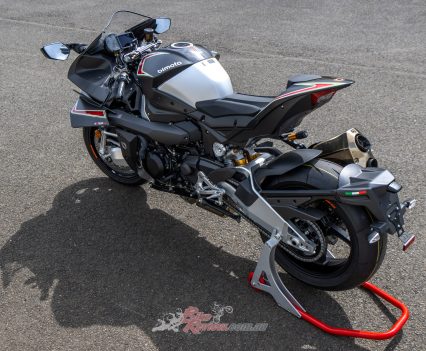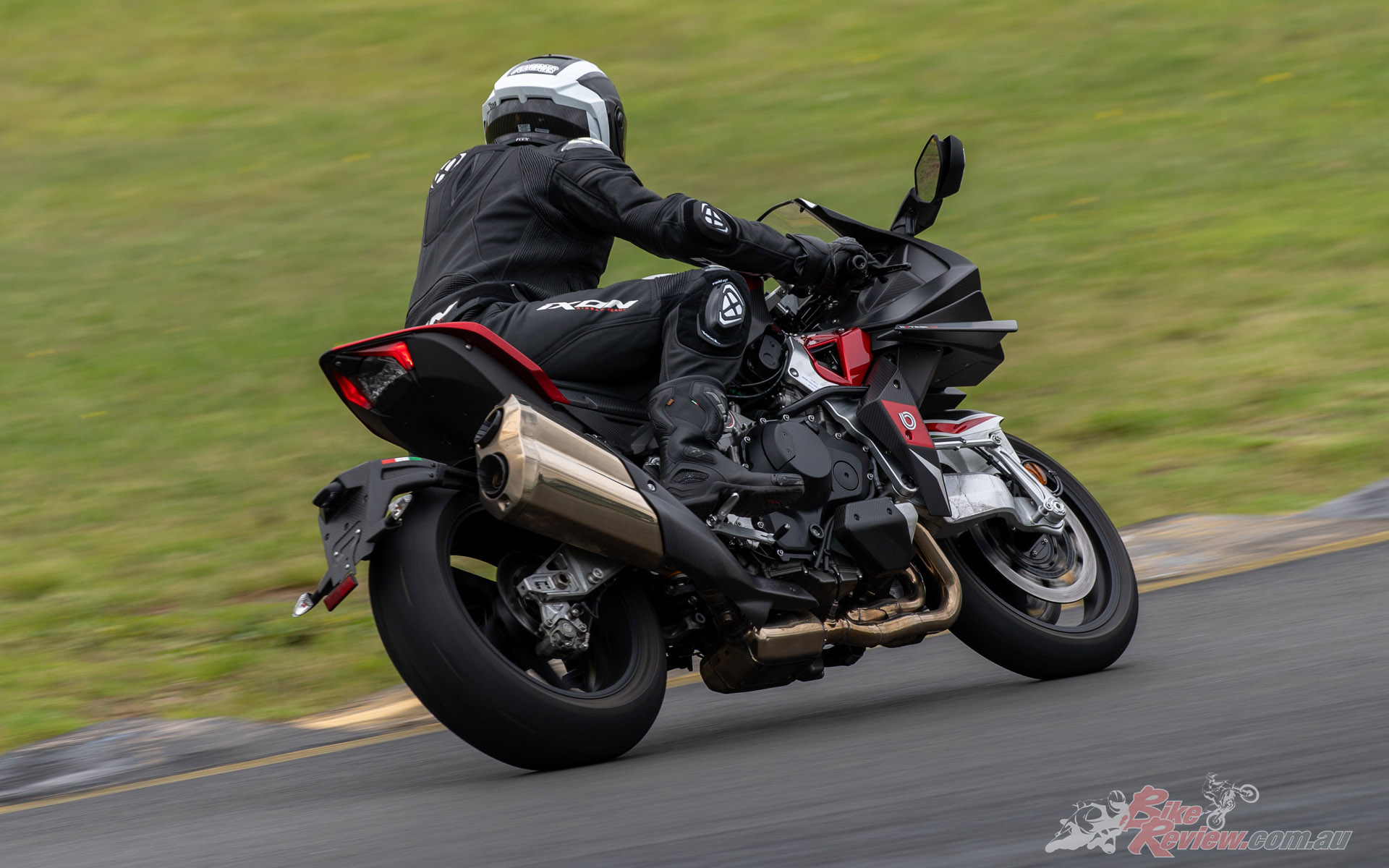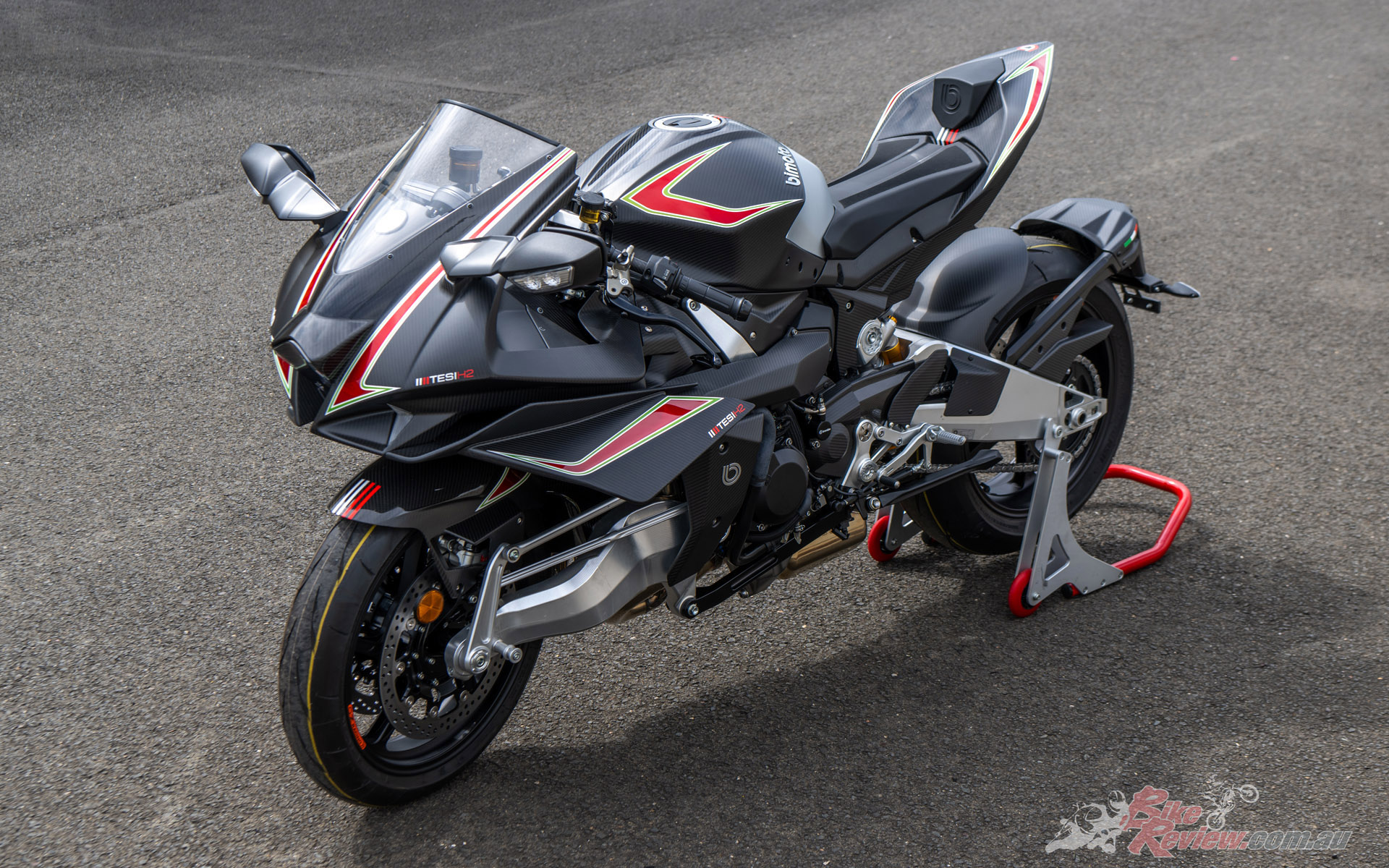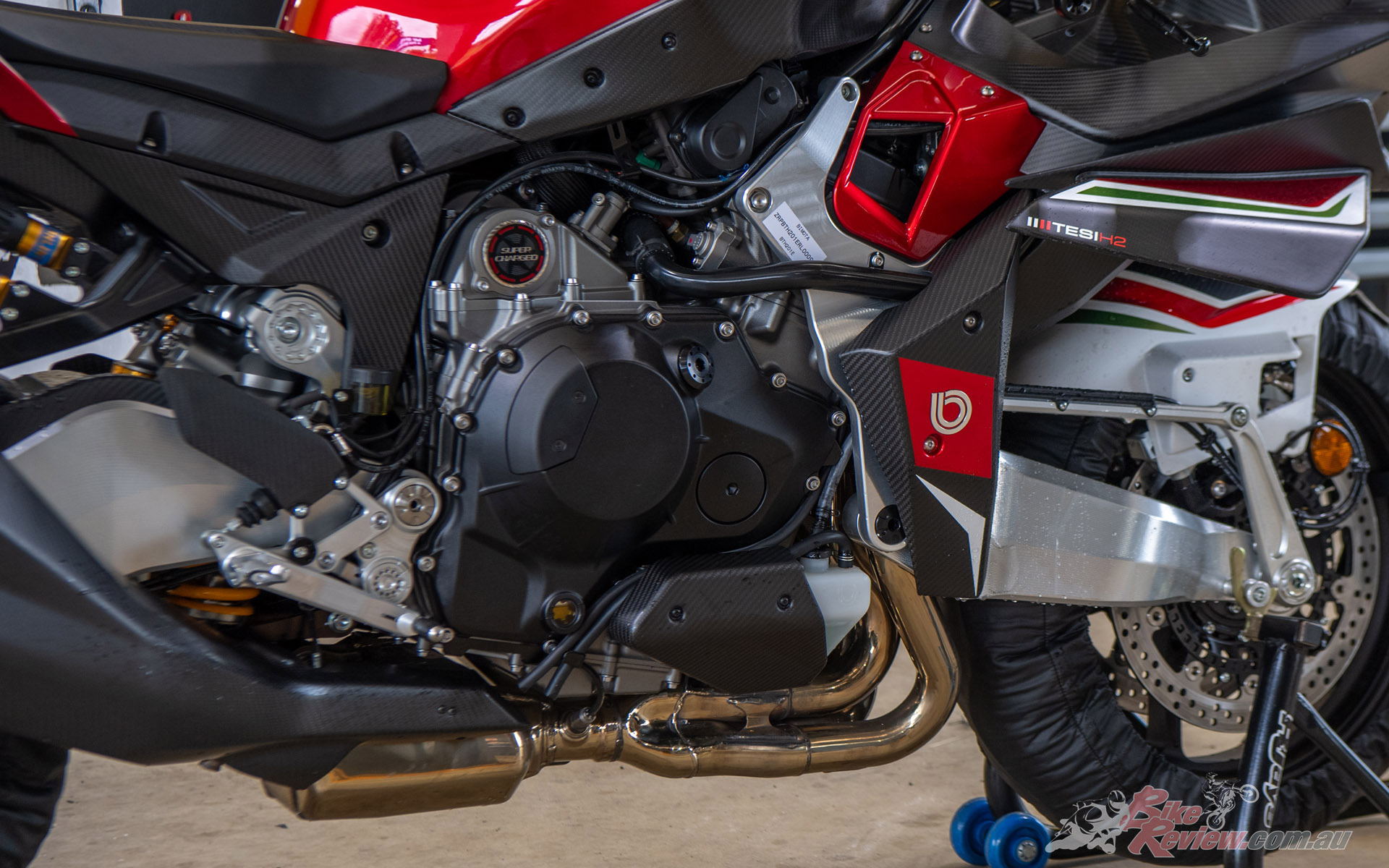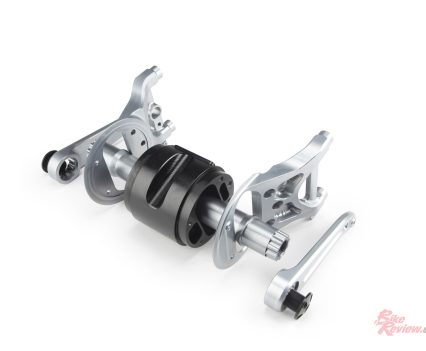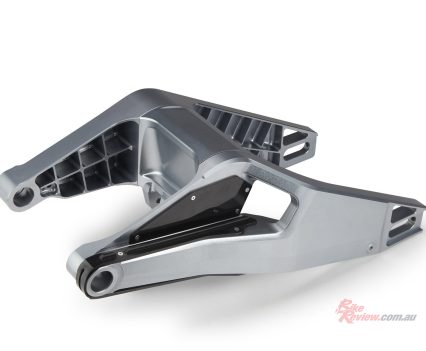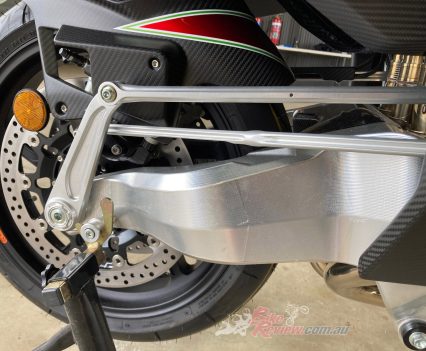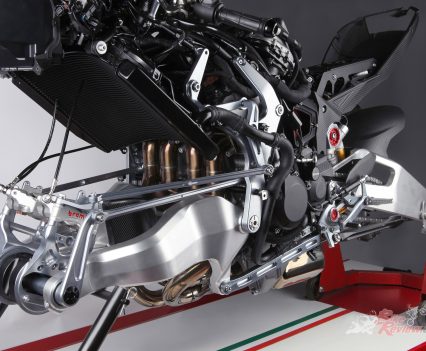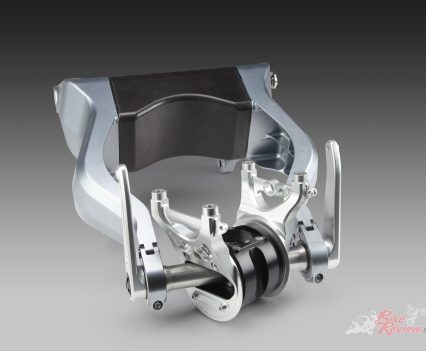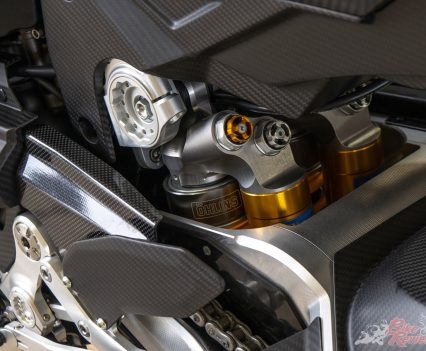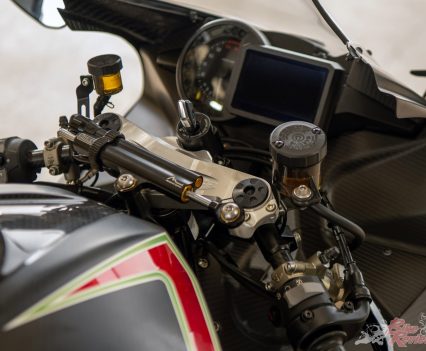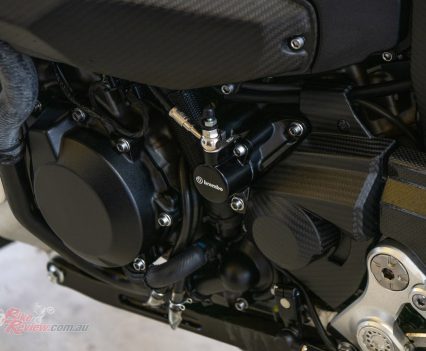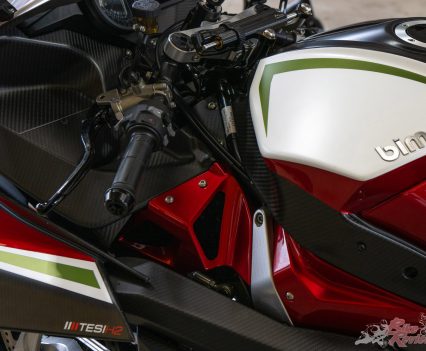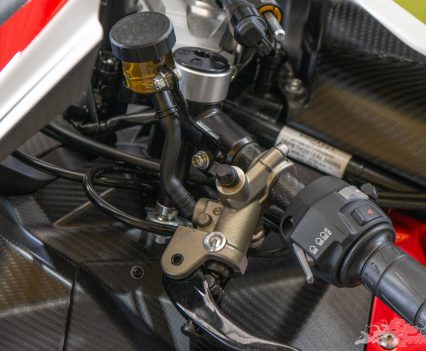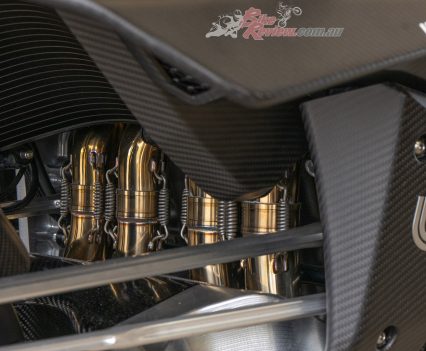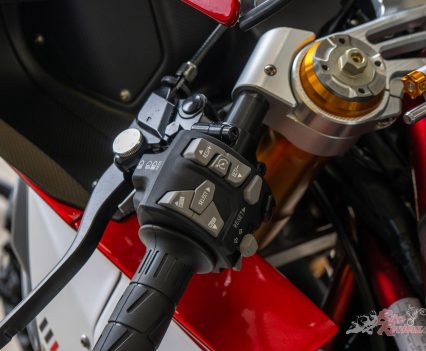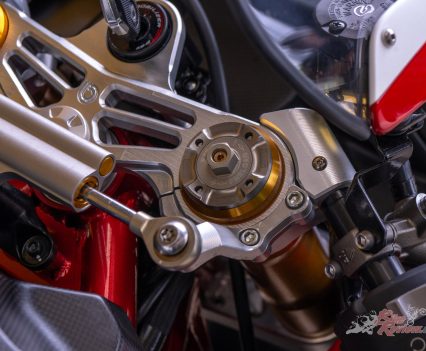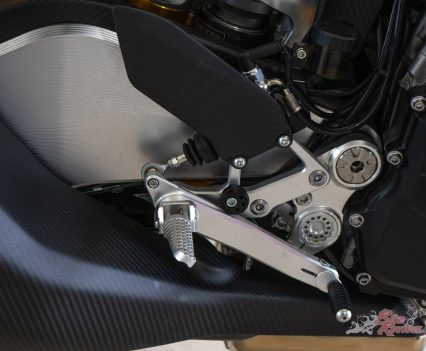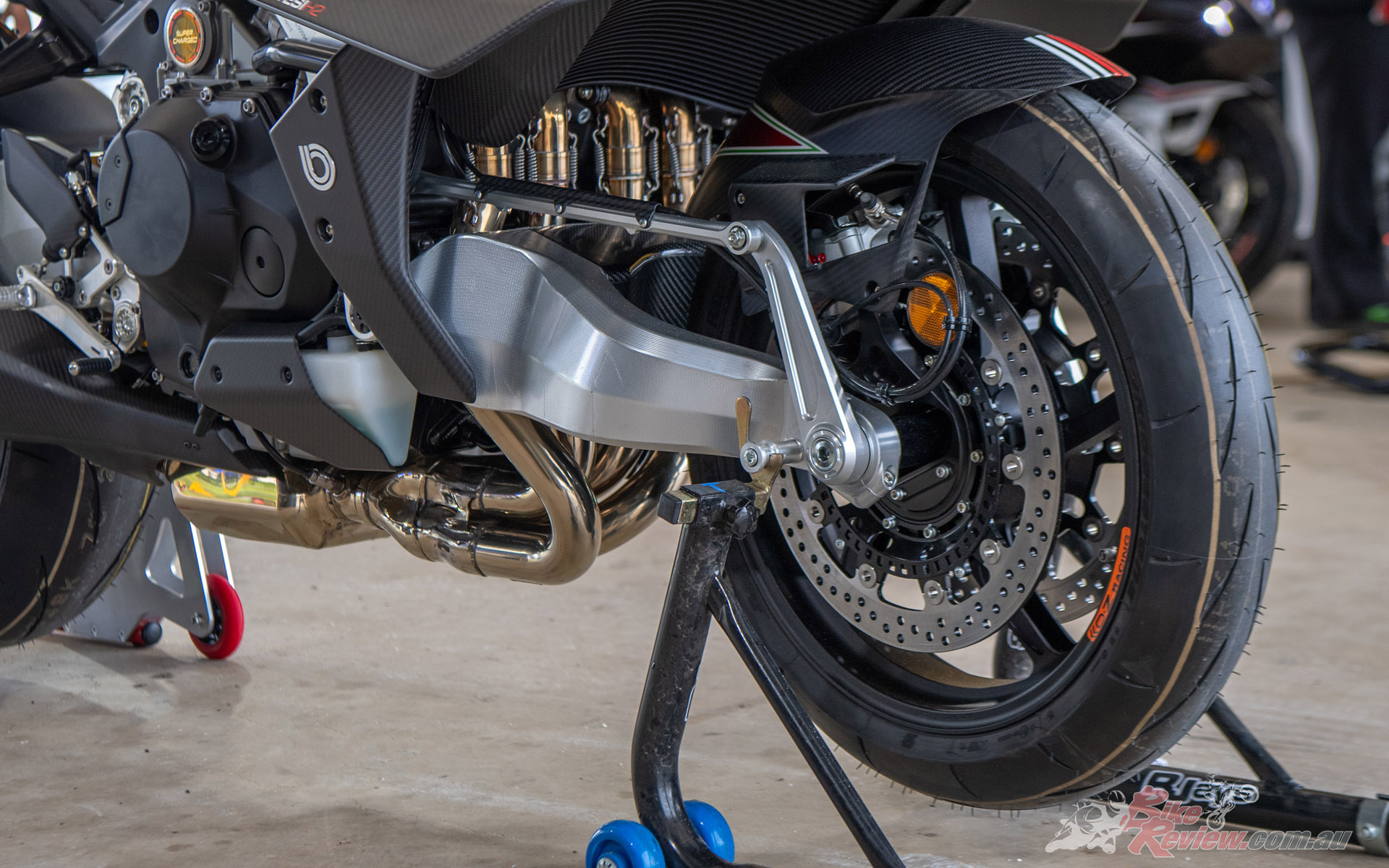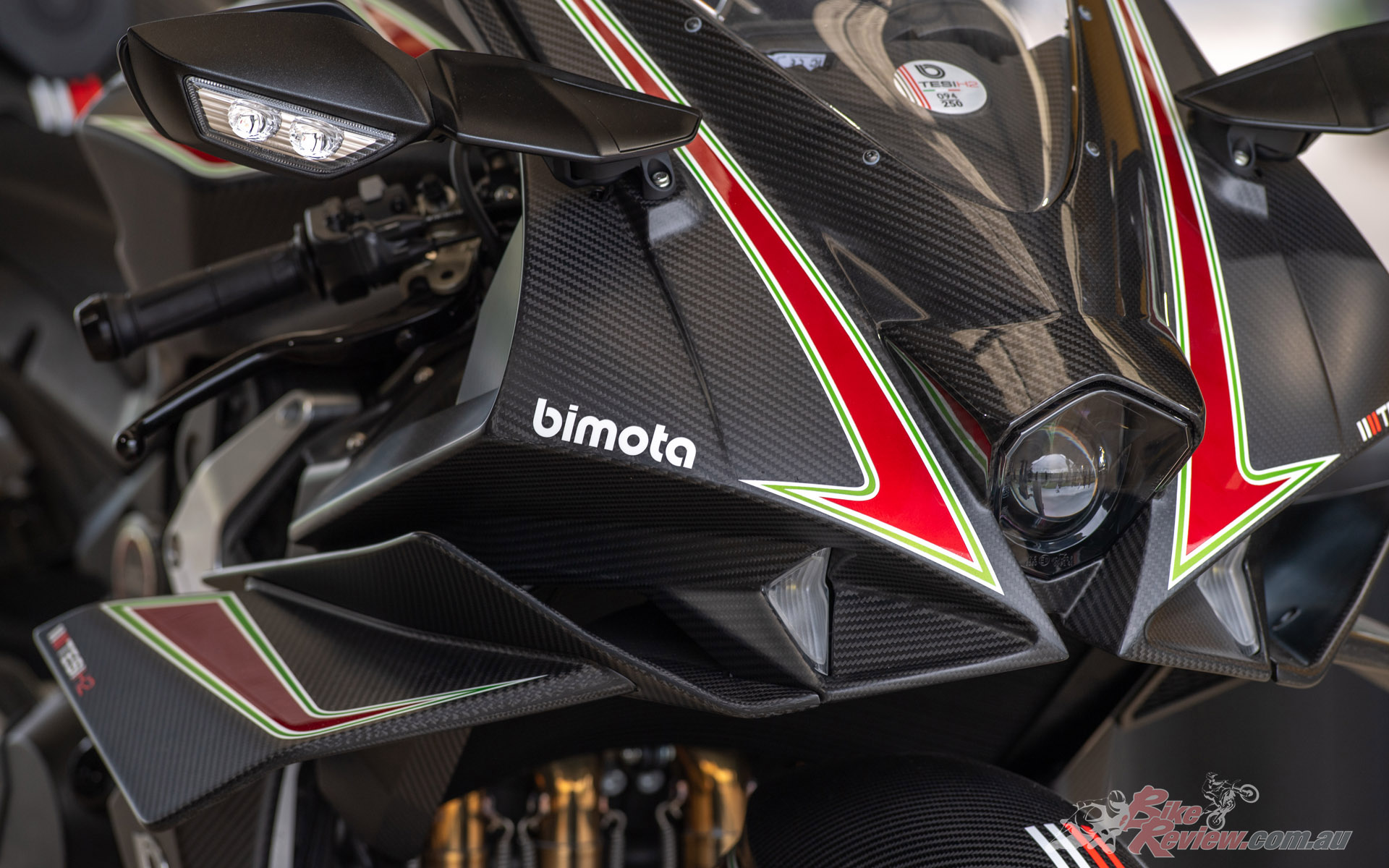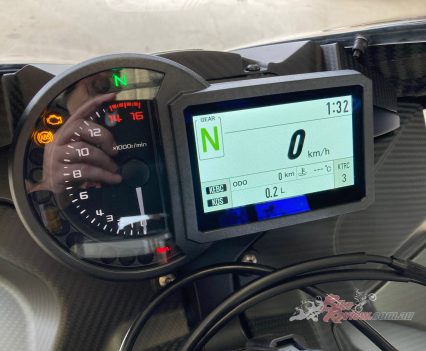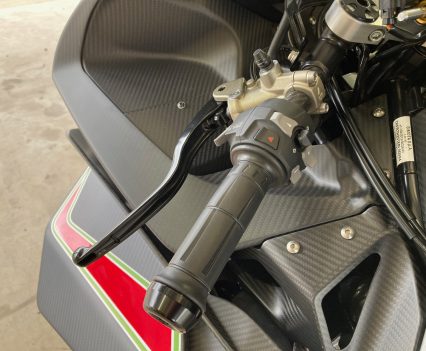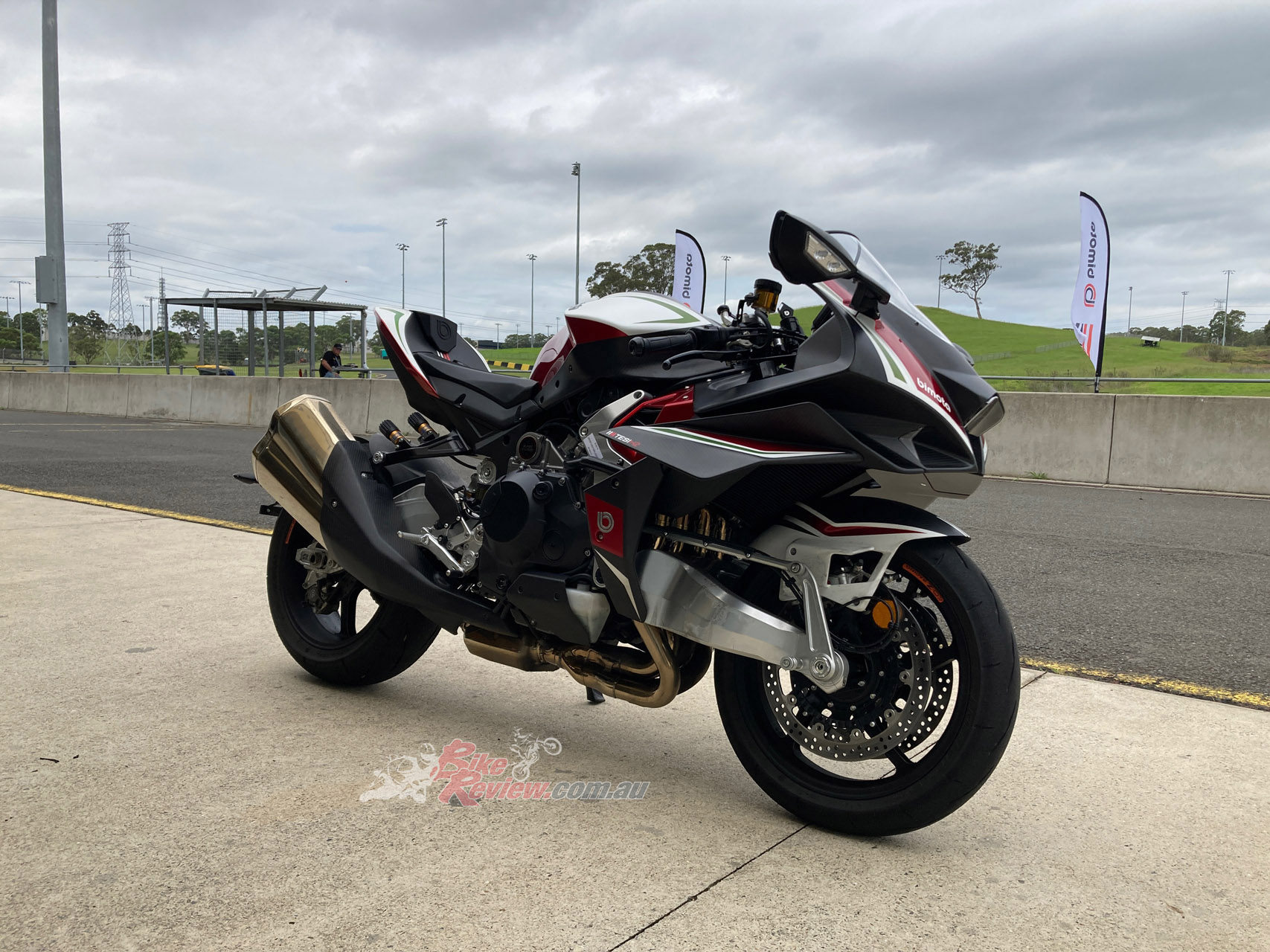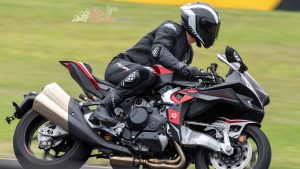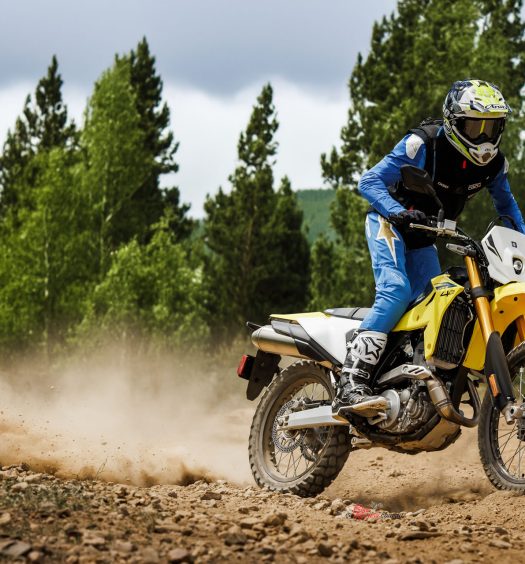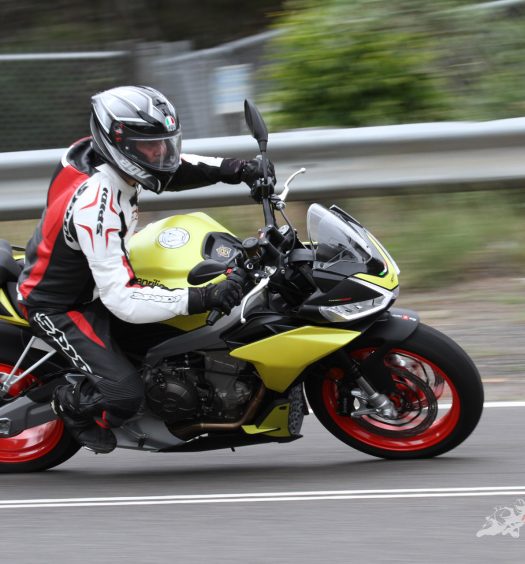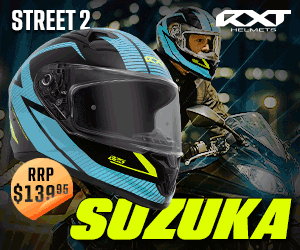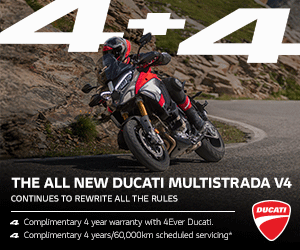The Bimota TESTI H2 is a wild $85,000 230-horsepower highly engineered artwork on two wheels. Tony Wilding has the privilege of being the first Aussie Journo to test the TESI H2...
The Bimota TESI H2 is one wild motorcycle. Over 230-horsepower, $85,000 price tag, lashes of carbon-fibre, titanium and CNC billet alloy. Tony’s been dreaming about riding a Bimota since he was a kid. He finally got a chance. Here’s our TESI H2 quick-test and track review.
Arriving at SMSP raceway the heavens opened and I started to get nervous, I mean what could possibly go wrong riding a 230hp, $85,000 exotic piece of artwork around in the wet on new tyres? Like I said, Bimota has been around since the early ’70s and have produced some amazing bikes over the years, using their own bespoke chassis and bodywork with a donor engine from the likes of Yamaha, Suzuki, Kawasaki and probably what I know them best for is Ducati.
Read Tony Wilding’s Bimota KB4 Review here…
However, it’s no secret that over the years Bimota has seen its share of financial troubles, but fast forward to 2019 and Kawasaki acquired 49 per cent of Bimota and with that, a marriage of amazing engines and technology that brings together the best of both worlds in design and expertise.
If, like me, you get excited about nice TIG welds, perfectly laid carbon-fibre, superior paint finishes and engineering in general, then this is the bike for you. I could easily have the Bimota sitting in my lounge and be happy looking at all the technical work that has gone into designing this Italian exotic masterpiece, which is exactly what it is. Just look at the breakout photos and see how the centre-hub steering works and how the front suspension adjustments are operated from the rear.
“If, like me, you get excited about nice TIG welds, perfectly laid carbon-fibre, superior paint finishes and engineering in general, then this is the bike for you.”
It really is amazing and if I could afford it, I’d buy one just because it’s so different to any other bike I’ve ever seen. When you look at the incredible detail and quality in every component on the bike, from the billet gearlever to the carbon number plate holder, you can start to see the value and why it is $85k.
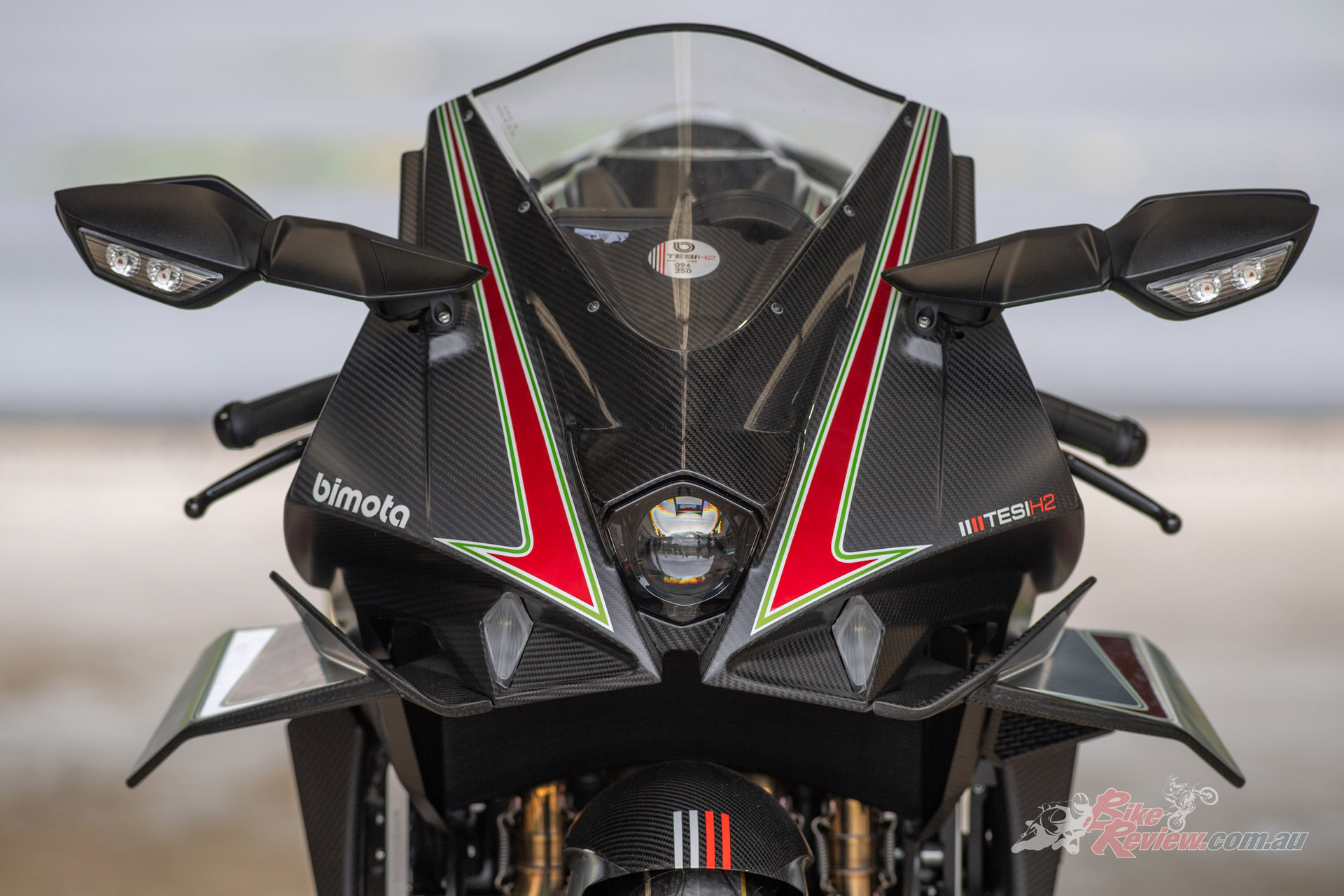
The quality, finish and engineering of the TESI H2 is second to none. Just look at that carbon-fibre…
As it turned out with the schedule, I’d be the first journalist in Australia to ride this beast. I set the ride mode to Rain, which turns out to be pretty easy, because it has a Kawasaki dash and controls, which are familiar to operate. Slinging a leg over the TESI I knew I was on something special. I hit the start button and was greeted by a nice but subdued exhaust not from the massive muffler. As I headed out of pit lane I lifted my feet onto the pegs, the extreme racy ride position was a firm reminder why I normally ride naked bikes.
“As it turned out with the schedule, I’d be the first journalist in Australia to ride this beast.”
I was intrigued as to how the TESI would steer with its unusual centre-hub steering setup and as it turned out it took some getting used to, it’s not racer sharp like a conventional sportsbike, but it’s not too bad either. I had no problem flicking the bike from side to side on the twisty track with a bit of rider input, it wasn’t as quick steering as the more conventional Bimota KB4 I tested later, but that was 20kg lighter too.
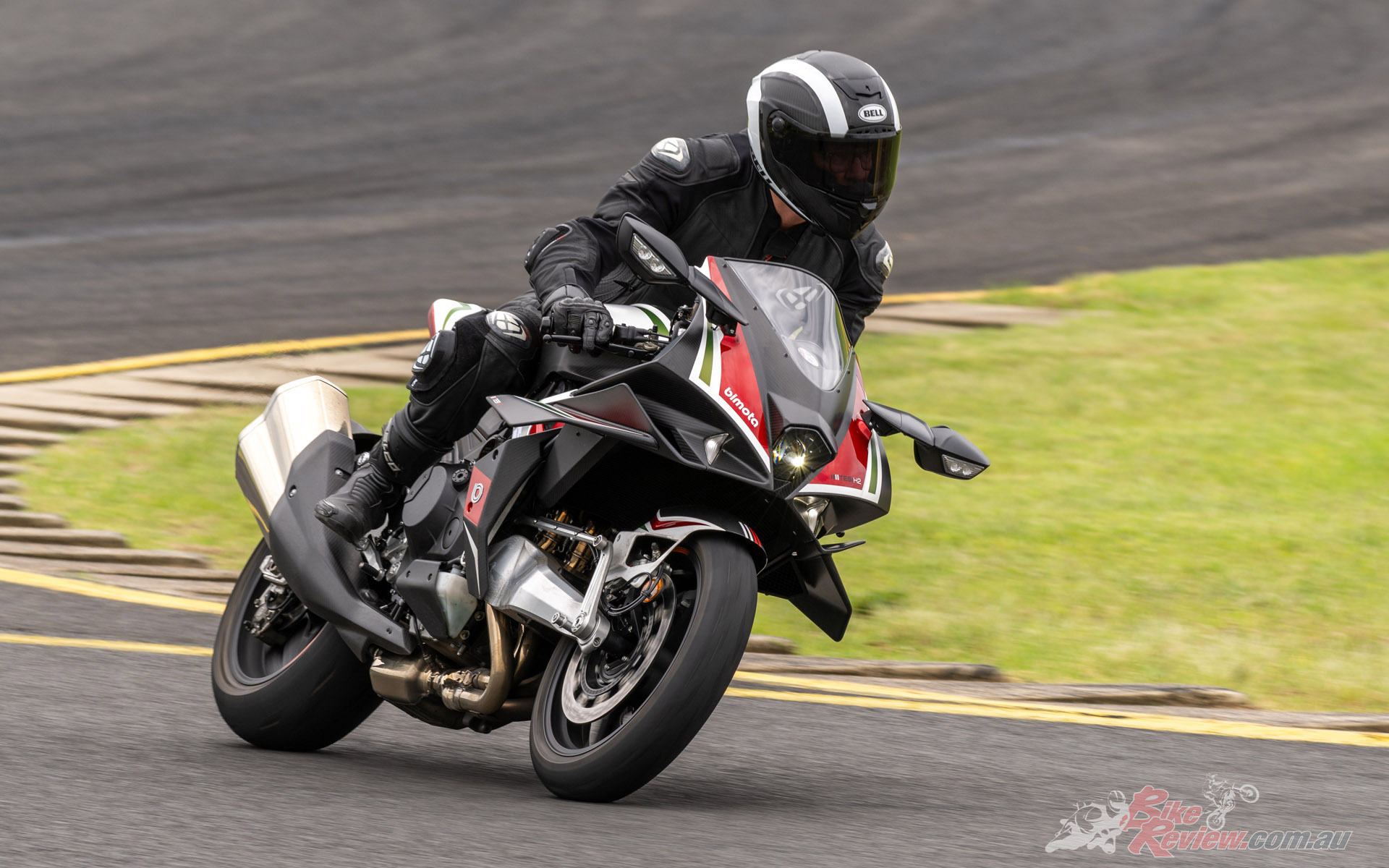
“I was intrigued as to how the TESI would steer with its unusual centre-hub steering setup and as it turned out it took some getting used to”.
However, like I said it did take a bit of getting used to, the way it is set up means unlike a conventional fork there’s literally no dive on the front or the rear when you hit the brakes hard or accelerate, meaning the bike stays pretty level. The only time I found it to be an issue was dropping down the hill into the hairpin on SMSP’s short Amaroo circuit, I could really feel the bike’s weight wanting to push wide.
Having said that, the bike had only just been put together and the suspension had not been set up for the track, so it would have been nice to have someone like Mat Mladin, who was riding with us, to have a play with it and have time to set the bike up properly. It was great to share a track with the 7 x AMA champion again, the last time was a Rapid Bikes shootout at SMSP back in 2013!
The Brembo Stylema brakes are incredible and they need to be, they are taken straight from the Kawasaki H2 and offer great feel and stopping power, intimate modulation at the lever, and they have cornering ABS that has been adapted to suite the Bimota’s unusually suspension design and I didn’t find the ABS to be interfering too much with the fun.
Apart from the obvious beauty of the bike, its party piece is the supercharged engine, it’s the most powerful bike I’ve ever ridden and it’s really mental, in fact, I don’t think I’ve ever said this before and I feel like I should give myself an upper cut for doing so, but it has too much power, especially for this tight track where I’m only using third gear. I would have loved to get the TESI on a big straight and really open it up, to get to feel what a 230hp bike is really like to ride.
“Apart from the obvious beauty of the bike, its party piece is the supercharged engine, it’s the most powerful bike I’ve ever ridden and it’s really mental”…
The only real drawback for me was the throttle response, it was a bit snatchy coming out of the corners and getting on the power and being on a small tight track only highlights the flaw in initial throttle opening. It’s a closed loop issue that can be mapped out, though. I think if we were on the road when you’d be pulling taller gears, the throttle response wouldn’t be so noticeable and let’s face it, this is where this bike will spend most of its life.
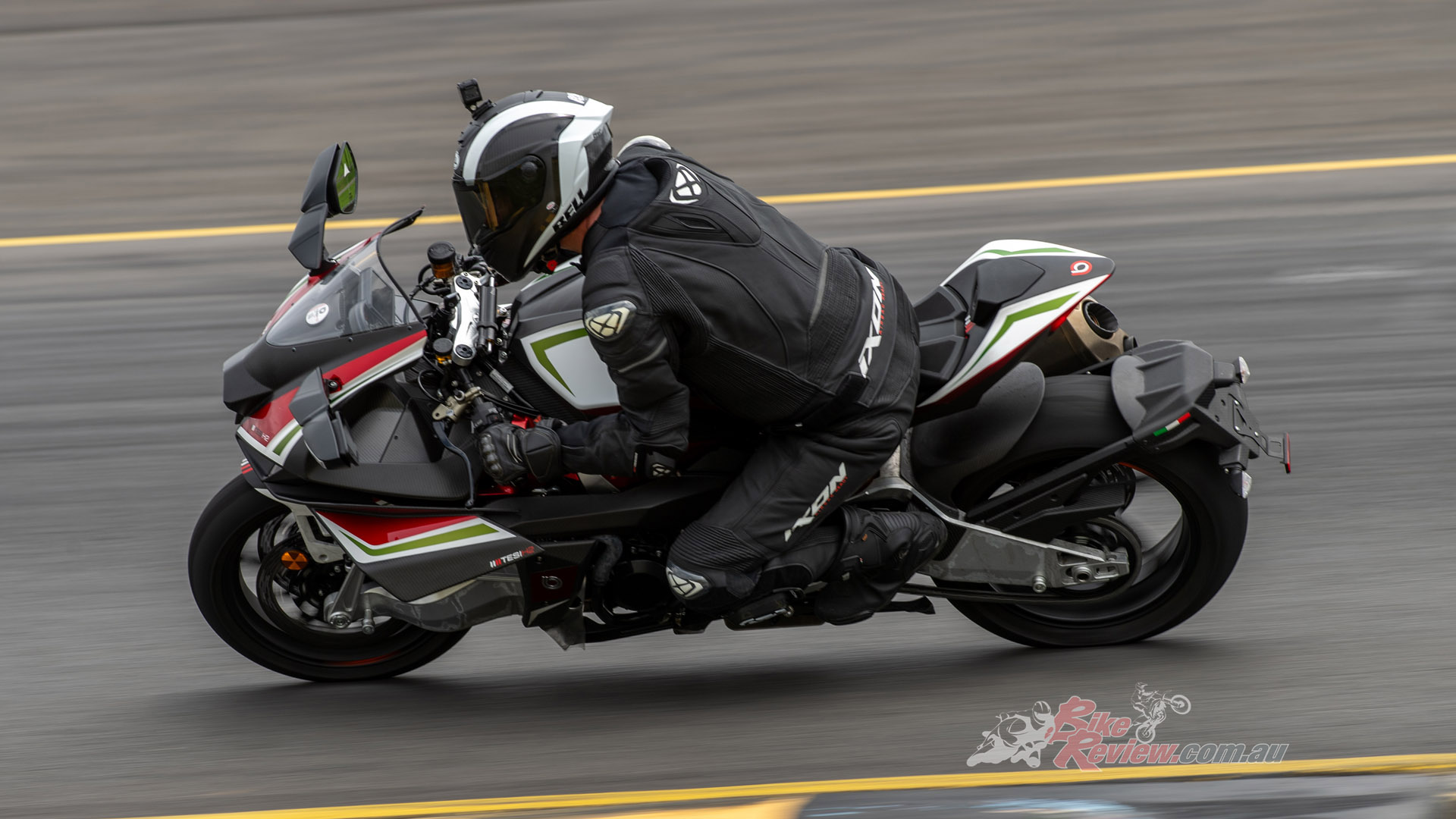
“By the end of the day, I’d got a bit more used to the way the TESI H2 behaves, but it would take a lot longer than a few sessions to get that muscle memory to change”.
After the track dried I switched the bike into sports mode, which unleashes all the ponies the bike has to offer. I was only using second and third, popping gears up and down with the quickshifter and the whooshing noise from the supercharger was addictive. I can only imagine how good the TESI would sound with the optional Arrow exhaust, that would also have the benefit of shedding 14kg and looking at the videos I’ve seen, fires flames out the back for you viewing pleasure.
By the end of the day, I’d got a bit more used to the way the TESI H2 behaves, but it would take a lot longer than a few sessions to get that muscle memory to change. I think I just needed to trust the bike’s unusual design more, it’s just so different than a conventional suspension bike, that dives into corners and has the feeling of loading the front tyre and squats coming out of the turn – the TESI H2 does none of that and that messes with your head as you recalibrate your thinking as warp speeds.
Kawasaki bought a 49.9 per cent share in Bimota in 2019, after rumour has it that the factory in Rimini had closed in 2017. I can’t help feeling that the partnership between Bimota and Kawasaki is going to produce even more amazing bikes in the future. A combination of Kawasaki’s reliability and engine design along with Bimota’s amazing creativity and quality can only be a good thing, especially if you have the money to own one… What a machine, ride on one day if you can, it’ll be a highlight!
BIMOTA TEST H2 TECH TALK
The heart of the Bimota TESI H2 is its engine, the Kawasaki Ninja H2 998cc supercharged inline-four. This engine is well known for its amazing performance, producing an unbelievable amount of power, in the TESI it has 170kw (231bhp) to be precise at 11500rpm and a whopping 141.7Nm of torque at 11000rpm. The supercharger enhances the engine’s output especially lower in the rev-range all the way to a blistering top-end, the result is acceleration and top-end speed is mind blowing. The TESI H2’s engine is Euro 4 compliant with the massive exhaust, but Bimota offers a full race exhaust, which not only looks amazing and reduces weight by 14kg and at the same time adds another five horsepower, not that you need it.
One of the most distinctive features of the Bimota TESI H2 is its centre-hub steering and front-end suspension system. The motorcycle deviates from the conventional telescopic fork setup, adopting a centre-hub steering system. This innovative design separates steering and suspension functions, providing precise control and improved stability during cornering. The centre-hub steering contributes to reduced dive during braking and offers a unique visual appeal that sets the TESI H2 apart from other motorcycles. The front suspension acts more like a conventional rear swingarm and is a composite of three pieces. The left and right arms are formed from billet aluminium and are bonded to a centre bridge made from carbon-fibre.
The bridge ensures the correct balance of rigidity between the left arm, where the suspension is connected. The front and rear swingarms are bolted directly to the engine so there is essentially no real frame needed. There is a pivot rod that attaches to the front swingarm and leads to the rear, where it can easily be adjusted for preload, rebound and compression via the Ohlins TTX36 shock. The rear swingarm also gets the Ohlins TTX36 shock and they sit side by side for easy access and look pretty trick sitting next to each other.
The result is a steeper steering angle of 21.3° with 117mm of trail, the Kawasaki H2 for example has a steering angle of 24.5° and 103mm of trail, if we are comparing the two bikes, Bimota have also managed to make the TESI H2 round 20kg lighter with a curb weight of 214kg, with the lashings of carbon-fibre and forged magnesium alloy helping with the weight loss. The ride height can also be adjusted by 20mm along with the footpegs to suit the rider more. If the TESI H2 does get a bit unruly, there is also an adjustable Ohlins steering damper to keep the front-end nice and tame.
The braking system on the Bimota TESI H2 is another area of focus. The TESI gets the same quality four-piston Brembo Stylema calipers and 330mm rotors as the Kawasaki H2, along with Kawasaki’s cornering ABS, however the system has been altered to match Bimota’s geometry setup. The system ensures precise and powerful braking capabilities needed to bring this missile to a stop.
In terms of electronics, the Bimota TESI H2 is equipped with a sophisticated suite of features, such as a six-axis IMU-linked rider aids that are taken straight from Kawasaki’s H2, along with the TFT dash, Kawasaki Traction Control (KTRC), Kawasaki’s Cornering Management Function (KCMF), Kawasaki Traction Control (KTRC), Kawasaki Launch Control Mode (KLCM), Kawasaki Engine Brake Control, Kawasaki Intelligent anti-lock Brake System (KIBS), ABS and Dual-direction Kawasaki Quick Shifter (KQS).
These features allow the rider to manage various aspects of the motorcycle, including engine performance, traction control, and rider aids. With multiple riding modes, this allows the rider to tame the power and throttle response and tailor the bike’s behavior to their preferences or adapt to different riding conditions.
Bimota TESI History
The TESI concept was born in 1982. The very first sketch made featured a 550cc Kawasaki engine. In the years that followed, between 1983 and 1993, Bimota created five prototypes using four different engines, both two-stroke and four-stroke versions. The first TESI production motorcycle, the TESI 1D, using a Ducati V-Twin engine, was produced in 1991. In the original TESI concept, the engine was the frame – the suspension was bolted to it. During development, two aluminium plates were bolted to the sides of the engine to form a very strong chassis structure.
Now, 39 years since the concept’s inception in 1982, the newest TESI model, the TESI H2, introduces an original design to the market – where the engine is the frame – just like the first prototype using a Kawasaki inline four-cylinder engine. The TESI has come full circle. All of the key features of the TESI concept – mass centralisation, rider position, steering system separate from the suspension – were included without compromise in the new TESI H2 project – BIMOTA
2024 Bimota TESI H2 Specifications
Procycles.com.au
Price: $85,000 + ORC
Warranty: N/A
Claimed Power: 170kW[231hp]@11,500rpm
Claimed Torque: 141.7Nm@11,000rpm
Wet weight: 214kg
Fuel Capacity: 17L
Engine: Liquid-cooled, transverse-four, DOHC, 16 valves, 998cc, 76 x 55mm bore x stroke, 8.5:1 compression ratio, dual injection 50mm throttle-bodies, Kawasaki supercharger, KTRC, KLCM, KEBC, QKS, Gearbox: Six-speed with quickshift
Clutch: Wet multi-plate slipper
Chassis: Alloy frame plates (CNC billet) with rear swingarm mounting plates, alloy front and rear swingarms.
Rake: 21.3, Trail: 117mm
Suspension: Front Ohlins TTX36 shock, Rear Ohlins TT36 shock, both mounted side-by-side in rear swingarm, 100mm travel front, 130mm travel rear.
Brakes: Brembo radial-mount Stylema calipers, 330mm rotors (f), Brembo caliper, 220mm rotor (r), radial pull front master-cylinder, cornering ABS.
Wheels & Tyres: Forged OZ Racing alloy wheels 3.50 x 17in and 6.00 x 17in, 120/70 x 17in, 200/55 x 17in, Bridgestone Battlax RS11 tyres.
Dimensions
Wheelbase: 1455mm
Ground clearance: 140mm
Seat height: 840mm +/- 10mm
Overall height: 1145mm
Overall length: 2074mm
Overall width: 830mm
Instruments: Full TFT Display, LED lighting, Immobiliser, IMU (Inertial Measurement Unit), Kawasaki Cornering Management Function (KCMF), Kawasaki Traction Control (KTRC), Kawasaki Launch Control Mode (KLCM), Kawasaki Engine Brake Control, Kawasaki Intelligent anti-lock Brake System (KIBS), ABS > Dual-direction Kawasaki Quick Shifter (KQS), Electronic Throttle Valves (ETV), Economical Riding Indicator, Intelligent anti-lock Brake System, Cornering Management Function
Ratings (Track) | Bike Review | Bimota TESI H2 | 230-horsepower beast track test


